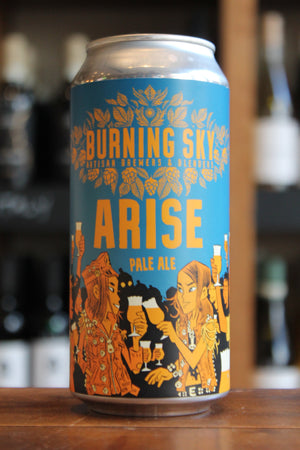Gueuze / Lambic
Lambic beer, which is produced in the Senne Valley and Pajottenland regions of Belgium, is the base beer from which Gueuze and Fruited Lambic beer is then made from.
A Gueuze is a type of Lambic beer, made up of a blend of young and old Lambic beer, usually between 1 and 3 years old. A secondary fermentation takes place in bottle as the younger portion of lambic in the blend is not yet fully fermented.
Lambic beers (which may later go towards creating a Gueuze) are spontaneously fermented, meaning they do not use commercial yeast or bacteria, instead relying on naturally occurring microbes present in the brewery. There are several fermentation phases that take place over of a period of time, starting in a Koelschip and then continuing in wooden barrels or casks.
Prior to fermentation during the boil, old stale hops are added, which display none of the characteristics of fresh hops, leaning more towards cheesy and hay like qualities. They are viewed as a preservative not as the key to bitterness. Acidity plays more of a central role than bitterness to balance.
Some producers such as Cantillon and De Cam do occasionally release non fruited non blended Lambic (which is relatively flat). However, most Lambic is used for the aforementioned Gueuze style or for fruited Lambic. Popular examples of which would be Kriek (Cherries) or Framboise (Raspberries) though many other fruits and flowers are widely used.
A Gueuze displays a spritzy carbonation and is traditionally unsweetened; it is in fact relatively sour, delivering delicate fruit notes, cider characteristics, woody tones and acidity. As well, there may be an acetic aspect to the beer as well as Brettanomyces traits and other qualities which have come about due to the nature of the fermentation and aging processes. The term ‘funk’ is popularly coined and fits nicely.
‘Oude Gueuze’ means that the beer is unsweetened though not every single brewer or blender adheres to that.
Example: Boon Oude Gueuze, Cantillon Oude Gueuze
Fruited Lambic will also exhibit many of the same tasting notes as a Gueuze, while there is the nature of the designated fruit and its influence on the product to consider, as well as the effects of maturation. Once aging is complete then most of the time the fruited beer will be blended back in with a straight Lambic.
Example: Many to choose from – 3 Fonteinen Oude Kriek
There is a marked difference between traditionally fruited Lambic and fruited Lambic which has also been sweetened by using a syrup. These products are sweeter, cleaner tasting and less complex, possibly with a lower alcoholic content of around 3 to 4%, whereas a traditional bottling will be higher at around 6%, generally speaking.
Example: Timmermans Framboise
A Faro style beer is a Lambic beer sweetened at bottling using candy sugar. The type of lambic beer used is called Meerts or Biere de Mars, a low alcohol beer produced from the latter runnings of the mash. Historically low in alcohol, modern-day interpretations sometimes house marginally higher percentages.
Example: Lindemans Faro
Shop - Gueuze / Lambic








